Category Archive 'Pakistan'
04 Sep 2021

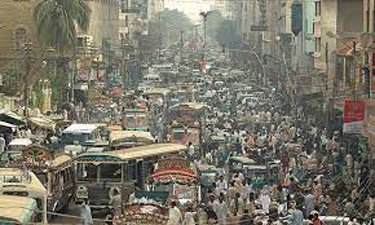
Seeing the link to Samira Shackle’s book excerpt go by, I realized that I knew next to nothing about this city of nearly 20 million people.
I moved to Karachi in the aftermath of riots, arriving to smashed shop windows and the smell of burning tires. It was 2012 and the city had been engulfed by protests against a YouTube video that made offensive statements about the Prophet Muhammad. The city’s few remaining cinemas had been attacked, and churches had taken extra security precautions, lest the mob hold Pakistan’s Christians accountable for the crimes of the American filmmakers. The scale of destruction was disproportionate to the offence itself. I was a Londoner moving to my mother’s hometown, a place I had visited only once since childhood. This was an immediate introduction to the discontent that bubbled beneath the surface of the city, always ready to erupt into violence.
I walked out of the airport into a heavy, humid night and was collected by my aunt, my mother’s cousin, with whom I planned to stay. We got into the back of the car; up front was the driver. (This felt unnatural to me to begin with, although I knew that it was common for well-off families in Pakistan to employ a full-time driver; many companies do the same for their office staff.) Karachi is a web of flyovers and highways, the sides of the roads dotted with battered colonial facades, concrete monstrosities, improvised shacks and half-built shells of buildings. Ornate plasterwork sits below poorly constructed high-rises designed only to maximize the space.
To travel on these roads is to be confronted with the massive population of this heaving city. We drove through traffic sprawling into multiple lanes. Motorbikes, sometimes bearing up to five family members, wove in and out between the cars, and men clung to the tops and sides of minibuses. As we drove, my aunt dispensed some safety advice. If a man on a motorbike stops by your car window and flashes a gun, don’t ask questions, just hand over your cash and phone. Change your timings, routes and vehicles frequently to minimize the risk of kidnap. If you pass through a dangerous district, don’t stop—not even if someone crashes into you. Read the rest of this entry »
22 Aug 2021


Sarah Chayes.
I accidentally stumbled upon a very interesting blog post on the causes of the Taliban’s success in Afghanistan on the blog of Sarah Chayes.
Sara Chayes (Andover and Harvard) is a former senior associate of the Carnegie Endowment for International Peace, an NPR reporter, and an advisor to the Pentagon. Despite all that, she seems to be highly intelligent and to have a deep first-hand understanding of Afghanistan.
For those of you who don’t know me, here is my background — the perspective from which I write tonight.
I covered the fall of the Taliban for NPR, making my way into their former capital, Kandahar, in December 2001, a few days after the collapse of their regime. Descending the last great hill into the desert city, I saw a dusty ghost town. Pickup trucks with rocket-launchers strapped to the struts patrolled the streets. People pulled on my militia friends’ sleeves, telling them where to find a Taliban weapons cache, or a last hold-out. But most remained indoors.
It was Ramadan. A few days later, at the holiday ending the month-long fast, the pent-up joy erupted. Kites took to the air. Horsemen on gorgeous, caparisoned chargers tore across a dusty common in sprint after sprint, with a festive audience cheering them on. This was Kandahar, the Taliban heartland. There was no panicked rush for the airport.
I reported for a month or so, then passed off to Steve Inskeep, now Morning Edition host. Within another couple of months, I was back, not as a reporter this time, but to try actually to do something. I stayed for a decade. I ran two non-profits in Kandahar, living in an ordinary house and speaking Pashtu, and eventually went to work for two commanders of the international troops, and then the chairman of the Joint Chiefs of Staff. (You can read about that time, and its lessons, in my first two books, The Punishment of Virtue and Thieves of State.)
From that standpoint — speaking as an American, as an adoptive Kandahari, and as a former senior U.S. government official — here are the key factors I see in today’s climax of a two-decade long fiasco:
Afghan government corruption, and the U.S. role enabling and reinforcing it. The last speaker of the Afghan parliament, Rahman Rahmani, I recently learned, is a multimillionaire, thanks to monopoly contracts to provide fuel and security to U.S. forces at their main base, Bagram. Is this the type of government people are likely to risk their lives to defend?
Two decades ago, young people in Kandahar were telling me how the proxy militias American forces had armed and provided with U.S. fatigues were shaking them down at checkpoints. By 2007, delegations of elders would visit me — the only American whose door was open and who spoke Pashtu so there would be no intermediaries to distort or report their words. Over candied almonds and glasses of green tea, they would get to some version of this: “The Taliban hit us on this cheek, and the government hits us on that cheek.” The old man serving as the group’s spokesman would physically smack himself in the face.
I and too many other people to count spent years of our lives trying to convince U.S. decision-makers that Afghans could not be expected to take risks on behalf of a government that was as hostile to their interests as the Taliban were. Note: it took me a while, and plenty of my own mistakes, to come to that realization. But I did. Read the rest of this entry »
11 May 2015

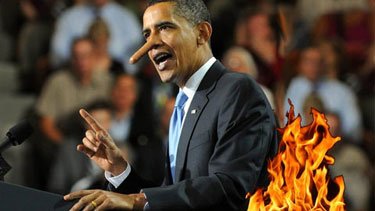
Investigative journalist Seymour Hersch has a major exposé in the London Review of Books revealing the astonishing and extraordinarily scale of Barack Obama’s lies regarding the killing of Osama bin Laden. Hersch is a hard-core radical anti-American leftist but, in this case, I expect he’s telling the truth.
And the truth seems to be:
1. Osama bin Laden was being held in Abottabad as a prisoner of ISI, the Pakistani Intelligence Service, which was using him as a hostage to keep al Qaeda from attacking Pakistan. The Saudis were funding his detention.
2. There was no courier trail. A former Pakistani intelligence spilled the beans to the CIA in order to get the offered reward.
3. The Pakistanis knew we were coming, and reluctantly agreed to let the US conduct the hit under threat of loss of US aid.
4. There was no heroism and no firefight. Osama had no guards. He was a helpless invalid and a prisoner and the Seals were under orders simply to kill him out of hand.
5. Osama was not in touch with, or directing, al Qaeda operations, and there was no treasure trove of intelligence.
6. Barack Obama then completely broke his word to the Pakistanis. There was supposed to be a delayed announcement that Osama had been killed by a drone strike on the Afghan side of the Hindu Kush, no mention of the house in Abottabad, and no clues whatsoever of Pakistani involvement or cooperation. By exploiting the killing of Osama for personal prestige immediately and abandoning the agreed-upon “drone strike” story, Obama double-crossed Pakinstan’s Intelligence Service, leading to a four-year-long rupture in relations.
7. There was never any burial at sea or Islamic service. Osama was literally shot to pieces, and the Seals happily tossed body parts out of the helicopter while flying home over the Hindu Kush.
Wow!
08 Apr 2015
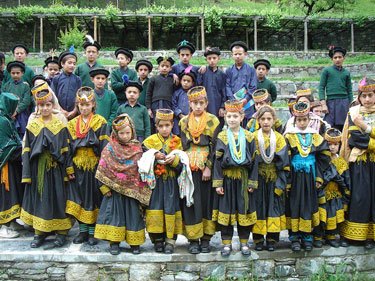
The Kalash live in Chitral, the northernmost district of Pakistan. They look European. Many have blond hair and blue eyes. They speak an Indo-European language of their own, and are not Muslim, but polytheists. They claim to descend from the soldiers of Alexander the Great, and served as the basis of Rudyard Kipling’s story “The Man Who Would Be King.”
Kuriositas has a photoessay.
19 Dec 2014

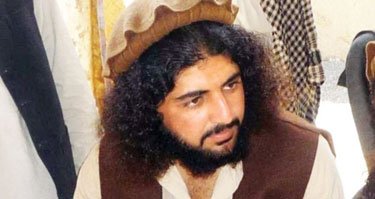
A few sources this morning are linking the recent massacre of school children in Peshawar with the December 7th handover by the Obama Administration to Pakistan of Latif Mehsud, second in command of the Pakistani Taliban.
Did the Pakis just turn Latif Mehsud loose?
GOP Daily Dose:
According to Reuters, only eight days before the Taliban faction known as Tehreek-e-Taliban Pakistan (TTP) brutally massacred over 130 school children in Peshawar Pakistan on Tuesday, Obama released the terror group’s second in command, Latif Mehsud.
U.S. forces captured Latif Mehsud, the former number two commander in Pakistan’s faction of the Taliban, in October 2013, in an operation that angered then Afghan president Hamid Karzai.
Mehsud, a Pakistani, and his two guards were secretly flown to Pakistan, two senior Pakistani security officials told Reuters. The U.S. military confirmed it transferred three prisoners to Pakistan’s custody on Saturday, but would not reveal their identities.Taliban terrorist-led attack on Pakistan school leaves at least 141 dead, including 132 children
Taliban: “We Slaughtered 100+ Kids Because Their Parents Helped America.†Muslim Terrorists who attacked an army-run school in Peshawar claim it’s retaliation for U.S.-backed efforts to crush a group that’s helped protect al Qaeda.FOX News The horrific attack in Peshawar, carried out by a relatively small number of militants from the Tehreek-e-Taliban group, a Pakistani militant group trying to overthrow the government, also sent dozens of wounded flooding into local hospitals as terrified parents searched for their children.
After thousands of American lives had already been sacrificed to capture known terrorists in the Middle East, Mehsud had finally been apprehended by U.S. forces during an operation in October 2013. Up until Sunday, the convicted terrorist had been held in the Afghanistan prison. But according to officials, he was handed over along with two others to security officials in Islamabad.
“TTP senior commander Latif Mehsud who was arrested was handed over to Pakistani authorities along with his guards,†one Pakistani security official said. “They reached Islamabad.â€
Although the Obama administration could try to claim that the release was due to the fact that the United States will no longer be allowed to keep foreign prisoners in Afghanistan when the mission led by the U.S. ends later this month, there were still other viable options available rather than handing these terrorists over to Pakistan.
In an interesting statement, a U.S. embassy spokesperson commented on the release, referring to the convicted terrorists released by Obama as merely “third-country nationals.â€
You know, just normal everyday guys.
“We’re actually just going through and returning all the third-country nationals detained in Afghanistan to resolve that issue,†the spokeswoman said.
—————
Or was the attack revenge for Meshud not being released?
Lubbock On-Line:
On Sunday 07 December President Barack Hussein Obama ordered the release of the second in command of the Pakistani Taliban. Latif Mehsud was transferred from a U.S. military prison in Afghanistan to the Pakistani government.
It is unclear if Mehsud was subsequently released from custody by the Pakistanis or is still incarcerated. The Taliban motive for its attack on the school, which was run by the Pakistani military, is yet unclear. It may have been revenge against the Pakistani government, perhaps because Mehsud remains in jail?
18 Sep 2012
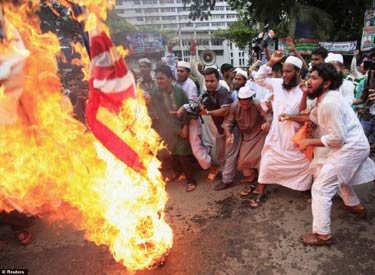
The Daily Mail publishes evidence that the order of the universe is not necessarily on the side of fundamentalist Muslim demonstrators.
A Pakistani protestor has died after inhaling smoke from burning U.S. flags during a rally against the anti-Islam film Innocence of Muslims.
Abdullah Ismail died in Mayo hospital in Lahore having complained of feeling unwell during the angry demonstrations in the eastern Pakistan city yesterday.
Around 10,000 people are estimated to have taken part in the protest organised by the group Tehreek Hurmat-i-Rasool.
Hat tip to Iowahawk (via FB).
11 Jun 2012


Put that in your pipe and smoke it!
Narco Polo reports that, in Afghanistan, motivated seekers of intoxication will resort to smoking the stingers of local scorpions.
[I]n Afghanistan even the ubiquitous scorpions can be used for intoxication. Tartars in Bamiyan province prepare scorpions by smashing them between stones and letting them dry. The main part of the tail, with the sting, is then crushed into a powder and smoked with tobacco and/or hashish (marijuana).
[A witness] in the Afghan town of Peshawar described the reaction:
The effect was instantaneous with the man’s face and eyes becoming very red, “much more than a hashish smoker†…. He also seemed very intoxicated but awake and alert, although he stumbled and fell over when he tried to rise from a sitting position …. the smoke tasted “sweeter†than that of hashish, although … it smelled foul, and the intoxicating effect lasted much longer. (1, p. 247)
As with most drugs, anecdotal reports of scorpion’s effects vary widely. It is likely that the numerous Afghan scorpion species have divergent psychoactive properties. Scorpion has been reported to keep one awake, cause severe headaches, and rival the effects of a “strong mescaline trip.†(1, p. 248) One Kabul man who had smoked between 20 and 30 times reported the effects to last three days. During these periods he had difficulty opening his eyes, his head spun, and he had constant visual hallucinations.
Globally, scorpion smoking is still rare. The failure of the war on other drugs has not driven people to seek it out … yet. If drug war success sparking scorpion use sounds unbelievable, in India’s Western states police crackdowns on mainstream illicit drugs have already led to “sting sellers.†A police officer in the city of Bharuch said:
Because of our successful drives against the sellers and addicts of alcohol, opium, cough syrup, and heroin in urban areas, young people are flocking on the highways to try the new craze of scorpion sting.
———————————-
The same practice was described as occurring in Pakistan in 2001. Reuters via Wired:
When they’re in season, Ghulam Raza smokes scorpions.
He says he dries their stingers in the sun and grinds them, then lights the powdery venom and sucks the smoke deep into his lungs.
“Oh yes,” he said when asked if the scorpions make him high. “When I smoke scorpion, then the heroin is like nothing to me.”
The place where Raza and other Pakistani junkies smoke dope or shoot up in the southwestern city of Quetta is a good place to find scorpions. It is the main cemetery, a dust-filled field of tombstones and corpse-sized mounds of rocks. …
In the cemetery, sometimes one of them will get very stoned and drop into an open grave.
07 Aug 2011

Michael Yon, as a tribute, published a photo of the interior of a CH-47 helicopter loaded with troops.
———————-
DEBKAfile says that the Taliban shot down that Boeing CH-47 Chinook helicopter in Wardak province carrying 25 members of US Navy SEAL Team Six, 5 crew members, and and 7 Afghan allies, the helicopter down brought using only a rocket-propelled grenade.
Downing a helicopter apparently by a rocket-propelled grenade, which is not a standard anti-aircraft weapon, indicates that the Taliban has perfected methods for shooting down low-flying American helicopters with the basic weapons in their possession.
As the investigation begins on the incident, there are conflicting reports about the mission performed by the men aboard.
According to a US military source, they were returning from an operation in which eight insurgents were believed to have been killed. A Taliban insurgent present at the crash scene told Western correspondents the helicopter was not leaving but arriving: “What we saw was that when we were having our pre-dawn (Ramadan) meal, Americans landed some soldiers for an early raid. The other helicopter also came for the raid,” Mohammad Walil Wardag said. “We were outside our rooms on a veranda and saw this helicopter flying very low, it was hit by a rocket and it was on fire. It started coming down and crashed just away form our home close to the river.”
———————-
Some are interpreting the helicopter loss as a deliberate attack on the US force responsible for the killing of Osama bin Laden and blame the Obama Administration for basking publicly in the success of that operation and releasing too many details.
———————-
Pakistan newspapers are rejoicing over the deaths of the Americans.
24 Jun 2011

Middle Eastern cartoon accusing ISI of assisting Osama
The New York Times reports a story leaked by US intelligence officials which connects the dots between the late Osama bin Laden and Pakistan’s ISI intelligence agency.
The cellphone of Osama bin Laden’s trusted courier, which was recovered in the raid that killed both men in Pakistan last month, contained contacts to a militant group that is a longtime asset of Pakistan’s intelligence agency, senior American officials who have been briefed on the findings say.
The discovery indicates that Bin Laden used the group, Harakat-ul-Mujahedeen, as part of his support network inside the country, the officials and others said. But it also raised tantalizing questions about whether the group and others like it helped shelter and support Bin Laden on behalf of Pakistan’s spy agency, given that it had mentored Harakat and allowed it to operate in Pakistan for at least 20 years, the officials and analysts said.
09 May 2011


Lord Kitchener
Mark Steyn compares then and now, observing that Kitchener would not only have released the photographs of the dead Osama.
In the fall of 2001, discussing the collapse of the Taliban, Thomas Friedman, the in-house thinker at The New York Times, offered this bit of cartoon analysis:
“For all the talk about the vaunted Afghan fighters, this was a war between the Jetsons and the Flintstones – and the Jetsons won and the Flintstones know it.”
But they didn’t, did they? The Flintstones retreated to their caves, bided their time, and a decade later the Jetsons are desperate to negotiate their way out.
When it comes to instructive analogies, I prefer Khartoum to cartoons. If it took America a decade to avenge the dead of 9/11, it took Britain 13 years to avenge their defeat in Sudan in 1884. But, after Kitchener slaughtered the jihadists of the day at the Battle of Omdurman in 1897, he made a point of digging up their leader the Mahdi, chopping off his head and keeping it as a souvenir. The Sudanese got the message. The British had nary a peep out of the joint until they gave it independence six decades later – and, indeed, the locals fought for King and (distant imperial) country as brave British troops during World War Two. Even more amazingly, generations of English schoolchildren were taught about the Mahdi’s skull winding up as Lord Kitchener’s novelty paperweight as an inspiring tale of national greatness.
Not a lot of that today. It’s hard to imagine Osama’s noggin as an attractive centerpiece at next year’s White House Community Organizer of the Year banquet, and entirely impossible to imagine America’s “educators” teaching the tale approvingly. So instead, even as we explain that our difficulties with this bin Laden fellow are nothing to do with Islam, no sir, perish the thought, we simultaneously rush to assure the Muslim world that, not to worry, we accorded him a 45-minute Islamic funeral as befits an observant Muslim.
That’s why Pakistani big shots harbored America’s mortal enemy and knew they could do so with impunity.
John Henrik Clarke, in Mohammed Ahmed, (The Mahdi) Messiah of the Sudan, says otherwise:
In avenging what he thought was England’s honor, Lord Kitchener showed no mercy and considered nothing to be sacred while he was accomplishing his mission. He more than earned the name, “The Butcher of Omdurman”. He bombarded the tomb of the Mahdi and took his bones and threw them into the Nile. It was said that the Mahdi’s head was packed in a kerosene tin and later used by Kitchener as a tobacco container.
/div>

Feeds
|












